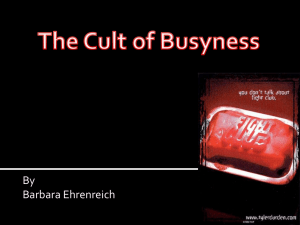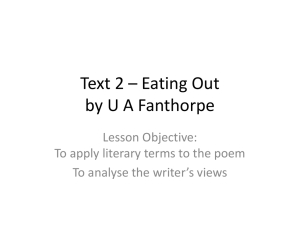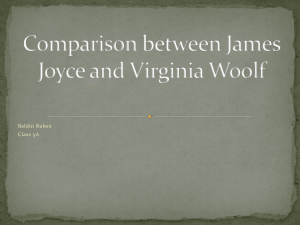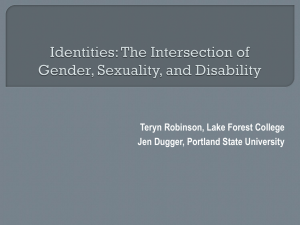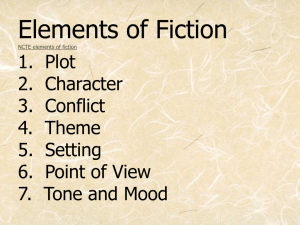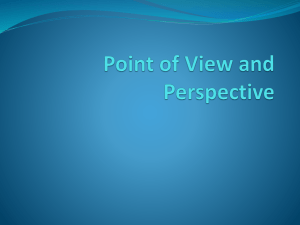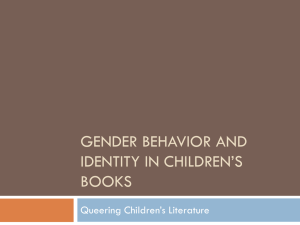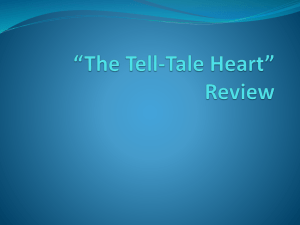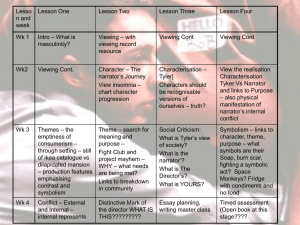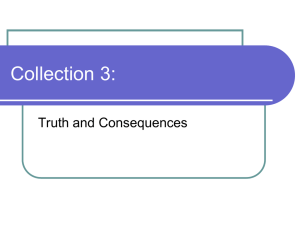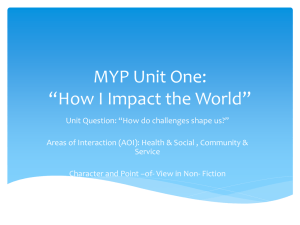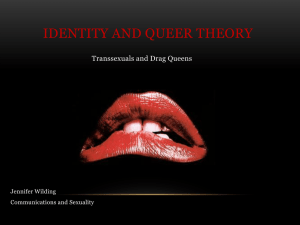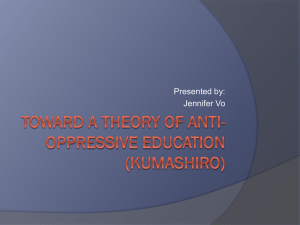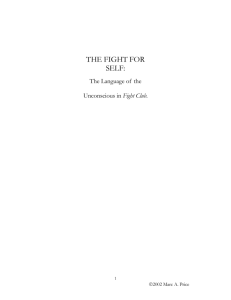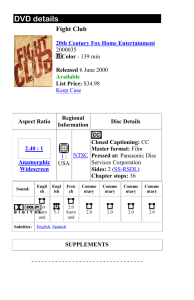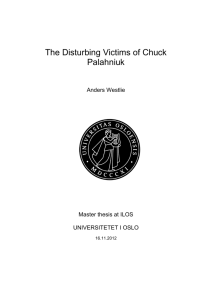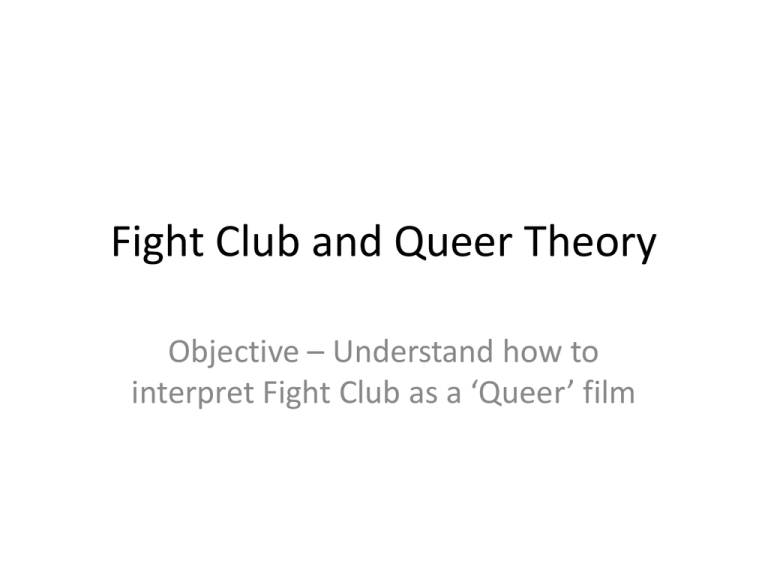
Fight Club and Queer Theory
Objective – Understand how to
interpret Fight Club as a ‘Queer’ film
What is Queer Theory?
• ‘Queer’ Theory is the academic term for any
analysis of texts / films which uncovers a
homosexual or lesbian interpretation of that text
/ film.
• It challenges the position that ‘heterosexual’ is
the only ‘normal’ sexuality
• Queer = positioned away from the norm
• It’s a school of criticism that grew partly out of
the decriminalisation of homosexuality in the
1960s
Why was it illegal to be gay?
• Biblical justification (Leviticus)
• Under UK Law (and we weren’t the
only country to have laws like this) it
was illegal to be homosexual, until
the Buggery law was repealed in
1967. (Until 1861, sodomy was a
capital offence.)
• Prior to this, if you were caught
engaging in ‘sodomy’, you could be
thrown in prison, or even
chemically castrated. This happened
to mathematician Alan Turing,
father of the modern computer, in
1952. He later committed suicide.
• Homosexuality was seen as ‘deviant
behaviour’
Despite this...
• Plenty of people in Britain were actually gay.
In fact, many personalities of stage and screen
were homosexual and forced to hide it
because of fear of prosecution
• There was a vibrant homosexual culture in
Britain in the 1960s and the legal reform
making it ‘ok’ to be openly gay led to many
people coming out after the law was passed
Nowadays, we think nothing of it
Openly gay
celebrities like
Stephen Fry, the late
Stephen Gately,
Rupert Everett, Louie
Spence and Elton
John are loved by
millions
Carry On actor Kenneth
Williams and pianist
Liberace – both
revealed to be gay after
their deaths in the 80s
Queer Theory and Fight Club
• We will analyse Fight Club from a Queer
perspective
• Much of this is obvious once you see it, but it
is still challenging (especially when you
consider the appeal of some of the stars of the
film)
• Basically – Fight Club is about the narrator
exploring his sexuality
Tyler Durden
• Tyler is a manifestation of the narrator’s
sexual desires
• He’s a fantasy friend – cool, sexy, charismatic
• Intimacy shared with the narrator (they live
together / bathe together / fight together) is
physical bordering on marital
• Fighting is a replacement for sex
Why create Tyler?
• Tyler is everything the narrator would be
• He’s an ideal to live up to
• Creating a fantasy male friend like Tyler
perhaps indicates repressed sexual attraction
towards men
• Fight Club is a ‘safe’ way to engage in pseudosexual contact (without actually having sex)
• The narrator is possibly afraid of ‘coming out’
What’s wrong with coming out?
• Consumerist society sells through sex
• Images of heterosexuality are projected
through the media
• To be gay is to stand out and not follow what
the media state; it’s literally ‘deviation’
• Society expects men to be macho, fit, violent,
treating women (Marla) like sex objects (think
about how loud their sex is)
Where does Marla fit into this?
• The narrator is disgusted by her
• “I’m wondering if another woman’s what we
need.”
• If she is a figment of his imagination, like Tyler,
then to have the two of them having sex is like a
betrayal, and the narrator (who has naturally
been submissive all his life) creates a fantasy
where even his hallucinations reject him, further
confirming his anxiety over his repressed sexual
desire
Operation Mayhem
• Is therefore a rebellion against an intolerant
society
• However, in realising that Tyler is not real, the
narrator comes to terms with his repressed
sexual desires and arguably chooses
‘normality’ (because he has been forced, by
society, to conform)
What about the ending?
• At the end, the narrator kills Tyler Durden (his
desire for men) and the last shot of the film is
him holding hands with Marla (his desire for
women)
• Yet... The last shot is an intercut shot of a
penis – is this really over and done with?
Penises are everywhere in Fight Club!
• Where?
• What about things that are done with
penises?
• What could this tell us, analysing it from a
Queer perspective?
Misogyny is not Homosexuality
• But...
• There is a sense that the narrator abhorring
women stems from him feeling uncomfortable
with them sexually
• Marla is a predatory woman; she speaks her
mind and isn’t conventional; in many ways she
is more like a man


